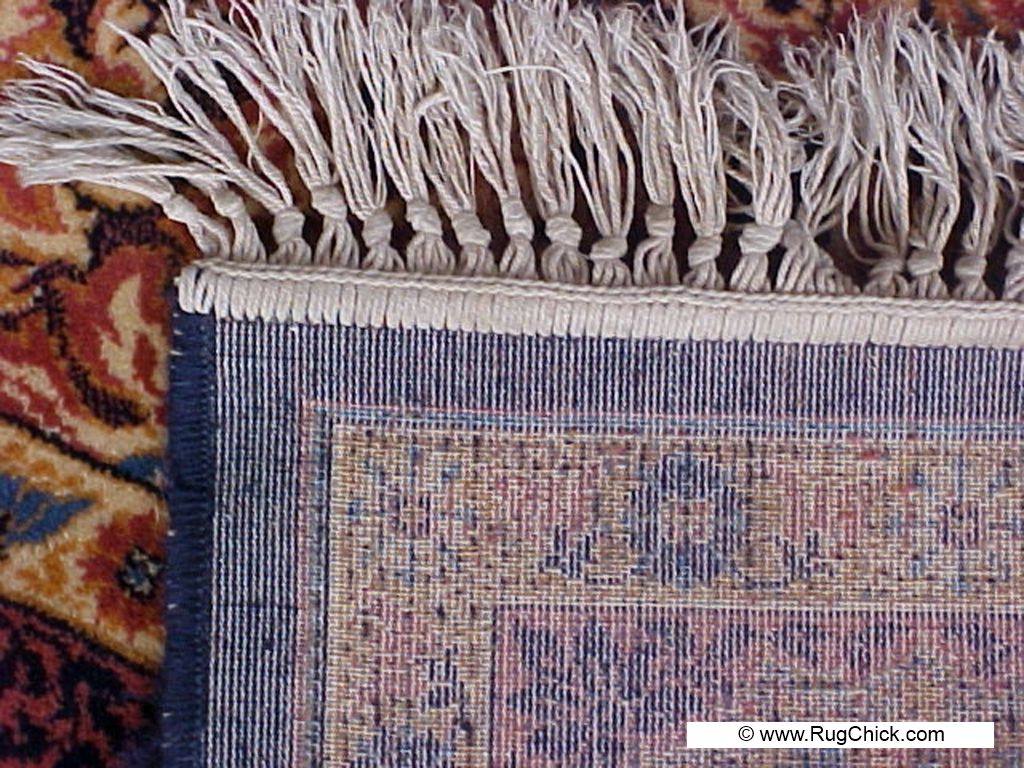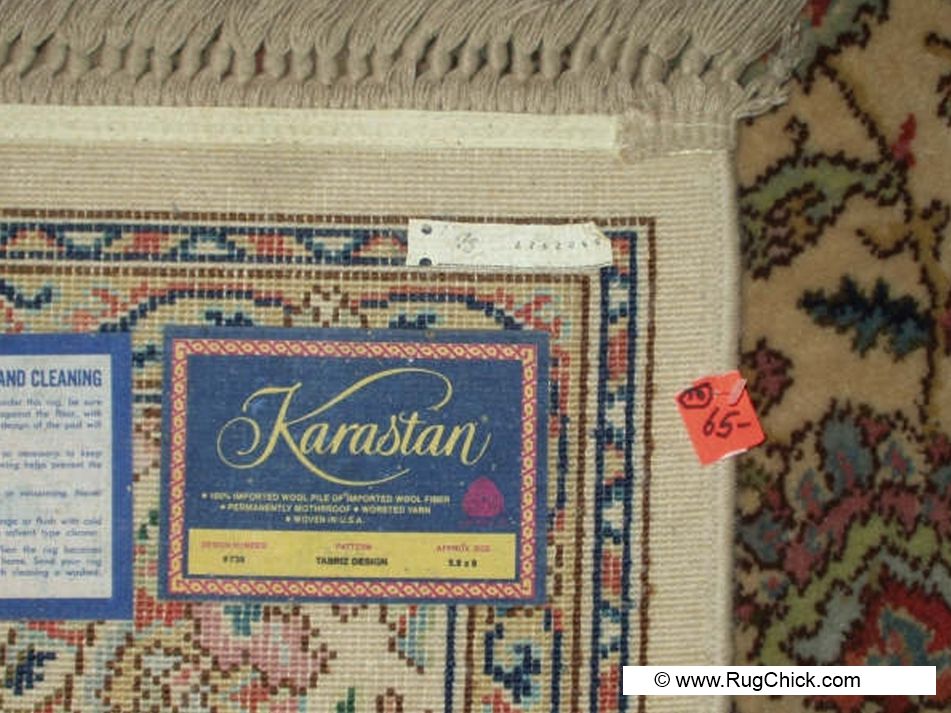Attack of the MACHINES!
Now more than ever, you are seeing MACHINE made rugs coming through your doors.
It used to be that these were still WOOL rugs, but today a number of olefin, polyester, and other synthetic fibers come your way. And they have “traditional” hand woven rug designs, so to an untrained eye and hand, you can easily mistake them for a “real” oriental rug.
(By the way – when I use the term “oriental rug” I am referring to a rug that has been hand WOVEN. I use the term “area rug” to refer to tufted, custom, and machine woven rugs.)
Q. Do you need to know if a rug is machine made or hand made to clean it?
A. NO.
Q. What do you need to know to clean a rug?
A. Fiber type. Dye stability. Construction type. Pre-existing conditions.
(People who claim you must know where a rug is from to clean it are being silly. 98% of the rugs that have come through our rug plant have all been washed with the same process, just differences in solutions, time-frame, and technique NOT because of where it’s from, but because of fiber, dye, or construction concerns.)
That said – it IS cool to be able to know when a rug is machine made or hand made – and it impresses your clients.
Here’s two quick shots of machine woven rugs. The first an easy one, the next not so easy.

First thing you notice is you see WAY MORE foundation thread peeking out at you than a handwoven rug. And the fringe sewing stitches, and the stitching on the side overcast wrapping – it looks machine made.
How about this one?

There is still some machine thread stitching along the base of the fringe, and along the side, but this is a VERY well woven wool rug… done in the good ol’ USA by machine. Karastan rugs are good quality, and can often be mistaken by their owners as “real” oriental rugs from overseas.
This also shows you the easiest way to identify a rug… which is to flip over the corner and read the TAG! 🙂
With these two rugs in particular, you can easily discern that one is of a higher quality than the other from just these simple pictures. If a manufacturer is going to take the care to create a tightly woven rug by machine, they are likely not going to be cutting corners on the other factors – the dyes and the fibers.
Conversely, if someone does cut a corner on the construction side by making it a mediocre quality weave by machine, you’d expect that they would not be investing in top quality fibers or dyes either. Usually if you see a corner cut in one area, there will be some “cuts” in other areas as well.
In fact, with these rugs, it is the “lesser” quality Belgian rug that has the dye stability issue (it will bleed if left wet too long) while the Karastan in question has very strong dye stability. I’ve also seen Karastans from the forties still with full wool pile, so the quality of the wool also can be very high.
I don’t prefer machine woven rugs to hand woven (I love hand crafted rugs, they are a piece of someone’s life and their spirit) … but for certain situations, for example, needing a rug in a high traffic entryway or in the room with pets – I’d grab a machine woven rug over a rug I want to keep to pass on after I’m gone. And if I chose a machine woven rug, I’d choose a Karastan.
But, if your budget dictates a cheaper option, there are plenty of alternatives today.
And, if you are a CLEANER, those cheaper options are the rugs you need to keep a sharp eye out for. Test the fibers, the dyes, the construction quality, and catch those pre-existing conditions BEFORE you clean.
– Lisa Wagner
